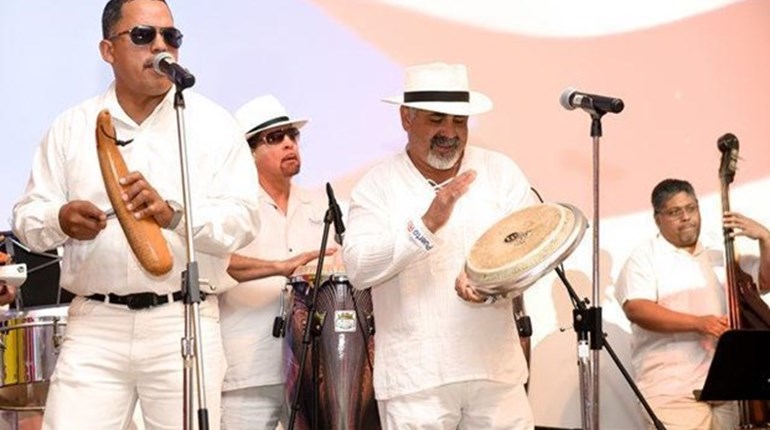Individuals of Latin American and Caribbean heritage have left a permanent mark on the state of Florida, sharing and blending their music, art, culture, food and language. While Cubans make up the largest portion of Florida’s Latin American population, there are many diverse communities that contribute to the state’s rich cultural landscape, including Puerto Ricans, Colombians, Dominicans and Mexicans, among others.
The city of Miami has long been a capital for Latin music, with big name musicians often touring and making a home in the area. In the 1930s, with the advent of “snowbirds,” or people from northern United States traveling down to a warmer winter in Florida, Miami’s Latin music scene was energized with big wave of outside influence. The rhumba was one of the dances of choice at the time, and bandleaders such as Cuban-born Desi Arnaz brought these sounds to Miami.
The year 1959 marks a major turning point in Florida and Miami history. With Fidel Castro’s rise to power, many Cubans defected to Miami to establish permanent homes across southern Florida. Before this influx, Miami was mostly a retirement town; after, it became a major hub for Latin American culture, music production and performance.
Children from this massive influx began to dominate the music scene in the 1970s through the 1990s, and famous musicians like Celia Cruz continued to tour extensively in Miami and other cities. In Miami, Gloria Estefan and the Miami Sound Machine took the world by storm in the 1980s and 90s, combining sounds from her Cuban homeland with U.S. popular music. Estefan and her husband, Emilio, are often credited with putting Miami on the map as a major music destination.
Today, Latin and Caribbean music can be heard across Florida. Artists from all over the world flock to Florida to perform and record their music. Many popular musicians have also made seasonal or full-time homes in Florida, including Enrique Iglesias, Pitbull, Shakira, Gloria and Emilio Estefan, Spam Allstars, Neri Torres and Renesito Avich.
The ¡La Sonada Florida! music tour will guide you through Latin and Caribbean music history and culture in Florida. Visit the Musicians page to learn about and listen to notable performers from the Sunshine State, and then use the Things to Do page to visit music festivals, significant venues and historical sites to experience Florida’s music history firsthand.
¡La Sonada Florida! is designed to showcase the wide variety of Latin and Caribbean music and dance across the state. It seeks to strike a balance in representation of music and dance, varied regional styles and cross-cultural fusions. This tour offers only a small selection of the many musical practices throughout the state, so be sure to come see all of the music and dance traditions that Florida has to offer!
